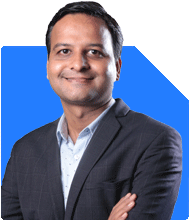Ramalingam Kalirajan |10872 Answers |Ask -Follow
Mutual Funds, Financial Planning Expert - Answered on May 29, 2024
He has an MBA in finance from the University of Madras and is a certified financial planner.
He is the director and chief financial planner at Holistic Investment, a Chennai-based firm that offers financial planning and wealth management advice.... more

Hello Learned Experts, I am a new MF investor; I would like to build a corpus of 2 Crores in the next 5 Yrs. I am currently investing 45000/- through monthly SIPs (open to double this contribution). I solicit your feedback, advice & recommendations to add/change this portfolio towards my goal. Axis Midcap Fund-Reg(G) 4,500 Mirae Asset Emerging Bluechip-Reg(G) 2,500 Nippon India Small Cap Fund(G) 4,500 PGIM India Midcap Opp Fund-Reg(G) 4,500 Aditya Birla SL Flexi Cap Fund(G) 4,500 Aditya Birla SL India GenNext Fund(G) 4,500 ICICI Pru Bluechip Fund(G) 4,500 ICICI Pru Value Discovery Fund(G) 4,500 Kotak Equity Opp Fund(G) 4,500 Parag Parikh Flexi Cap Fund-Reg(G) 4,500 Thanks, and regards, Arun
Hi Arun,
I appreciate you reaching out! It's fantastic that you're a new investor starting your journey towards a Rs. 2 crore corpus in five years. That's a commendable goal, and SIPs are a smart way to get there. Let's dive into your current portfolio and see how we can fine-tune it for your needs.
Current Portfolio Analysis:
Diversification: You've chosen a mix of funds across different market capitalizations (Large, Mid, and Small Cap). This is a good starting point for diversification, but ten funds might be a bit too many to manage effectively.
Fund Overlap: There might be some overlap between these funds in terms of the stocks they invest in. This can dilute the diversification benefit.
Risk and Your Time Horizon: Five years is a relatively short time frame for aggressive investment strategies. Some of these funds might carry higher risk.
Here are some suggestions to consider:
Reduce the number of funds: Aim for 4-5 well-diversified funds across market capitalizations. This simplifies tracking and rebalancing.
Focus on Actively Managed Funds: Actively managed funds, where experienced fund managers make investment decisions, can potentially outperform the market over time. Consider consulting a Certified Financial Planner (CFP) to help you choose these funds.
Regular vs. Direct Plans: Regular plans with an advisor can provide valuable guidance, especially for new investors. They can help you choose funds, understand your risk profile, and stay on track with your goals. While direct plans offer a lower expense ratio, the advisor's role can be crucial in your investment journey.
Considering your goal and risk tolerance, a possible approach could be:
2 Large-Cap Funds: These provide stability and good growth potential.
1 Mid-Cap Fund: Offers the chance for higher returns but with more volatility.
1 Flexi-Cap Fund: Gives the fund manager the flexibility to invest across market capitalizations based on market conditions.
Remember, this is a general guideline. Consulting a CFP can help you create a personalized portfolio based on your specific risk appetite and financial goals.
Taking it Forward:
Review Regularly: Meet with your CFP periodically to review your portfolio and adjust it as needed based on market conditions and your life goals.
Increase SIPs if Possible: If your income allows, consider gradually increasing your SIP amount to reach your target corpus faster.
Stay Disciplined: Market fluctuations are normal. Don't panic and redeem your investments during downturns. Stay focused on your long-term goals.
Building a Rs. 2 crore corpus in five years is ambitious, but with a well-diversified portfolio, regular investments, and professional guidance, you can increase your chances of success.
Best Regards,
K. Ramalingam, MBA, CFP,
Chief Financial Planner,
www.holisticinvestment.in
You may like to see similar questions and answers below
Nikunj Saraf | Answer |Ask -Follow
Mutual Funds Expert - Answered on Nov 10, 2022
Ulhas Joshi |280 Answers |Ask -Follow
Mutual Fund Expert - Answered on Mar 15, 2023
Nikunj Saraf | Answer |Ask -Follow
Mutual Funds Expert - Answered on May 24, 2023
Ramalingam Kalirajan |10872 Answers |Ask -Follow
Mutual Funds, Financial Planning Expert - Answered on Apr 12, 2024
Radheshyam Zanwar |6736 Answers |Ask -Follow
MHT-CET, IIT-JEE, NEET-UG Expert - Answered on Dec 06, 2025

Good luck.
Follow me if you receive this reply.
Radheshyam
Dr Nagarajan J S K |2576 Answers |Ask -Follow
NEET, Medical, Pharmacy Careers - Answered on Dec 06, 2025
Mihir Tanna |1090 Answers |Ask -Follow
Tax Expert - Answered on Dec 06, 2025
Ramalingam Kalirajan |10872 Answers |Ask -Follow
Mutual Funds, Financial Planning Expert - Answered on Dec 06, 2025
Radheshyam Zanwar |6736 Answers |Ask -Follow
MHT-CET, IIT-JEE, NEET-UG Expert - Answered on Dec 06, 2025
Radheshyam Zanwar |6736 Answers |Ask -Follow
MHT-CET, IIT-JEE, NEET-UG Expert - Answered on Dec 06, 2025
Radheshyam Zanwar |6736 Answers |Ask -Follow
MHT-CET, IIT-JEE, NEET-UG Expert - Answered on Dec 06, 2025
Dr Dipankar Dutta |1837 Answers |Ask -Follow
Tech Careers and Skill Development Expert - Answered on Dec 05, 2025
Dr Shyam Jamalabad |108 Answers |Ask -Follow
Dentist - Answered on Dec 05, 2025
Dr Shyam Jamalabad |108 Answers |Ask -Follow
Dentist - Answered on Dec 05, 2025



























